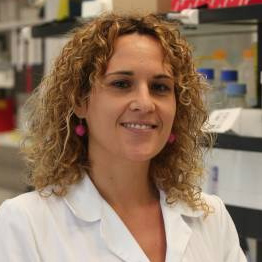Objectives


OBESITY AND AGING
To comprehensively study the pathophysiological and molecular mechanisms involved in the regulation of body weight in obesity and aging, as well as in the development of inflammation and associated pathologies such as diabetes subject 2, hepatic steatosis or certain types of cancer. In addition, we aim to determine how these conditions can be prevented/treated with per diem expenses, exercise and especially with novel therapeutic interventions/strategies.

APPROACH MULTIDISCIPLINARY
To this end, a approach multidisciplinary is addressed using:
- programs of study in vivo in obese mice induced by per diem expenses and transgenic mouse models;
- In vitro cell culture and co-culture systems of murine and human models;
- Omics technologies (transcriptomics, lipidomics,...);
- programs of study in human samples and nutritional intervention assays in humans.
Lines of research


Characterization of new factors involved in development and function of different types of adipose tissue and their implication in susceptibility to obesity. adipose tissue and its implication in the susceptibility to obesity.

Resolution of inflammation in metabolic diseases and aging: therapeutic potential of omega-3-derived lipid mediators. of omega-3-derived lipid mediators.

Prediabetes and diabetes subject 2: an integrative study of the microbiome, metabolome and chronobiological aspects of glycemic control.

Obesity and breast cancer: role of GLUT12 and proresolving mediators of inflammation.

Obesity and menopause: inflammation, physical exercise and omega-3.

Influence of oxygen (hypoxia) on metabolism.
Expected results

This line is considered a central axis for the generation of basic knowledge for the orientation and development of the other areas of the Center. It is expected that the findings derived from this area will allow the identification of biomarkers of inflammation and aging, as well as the characterization of new therapeutic/nutritional targets, which will allow the identification of bioactive molecules for the prevention/treatment of obesity and associated pathologies such as diabetes subject 2, fatty liver and breast cancer.
Team researcher
 → María Jesús Moreno (manager) → María Jesús Moreno (manager) |
 → Miguel Burgos → Miguel Burgos |
 → Pedro González Muniesa → Pedro González Muniesa |
 → Pilar Lostao → Pilar Lostao |
 → Asunción Redín
→ Asunción Redín
Ana Velasco
Irene Vides
Contact
María Jesús Moreno Aliaga
manager from area
mjmoreno@unav.es
C/ Irunlarrea, 1
31009 Pamplona, Spain
+34 948 425600
Contact

 →
→